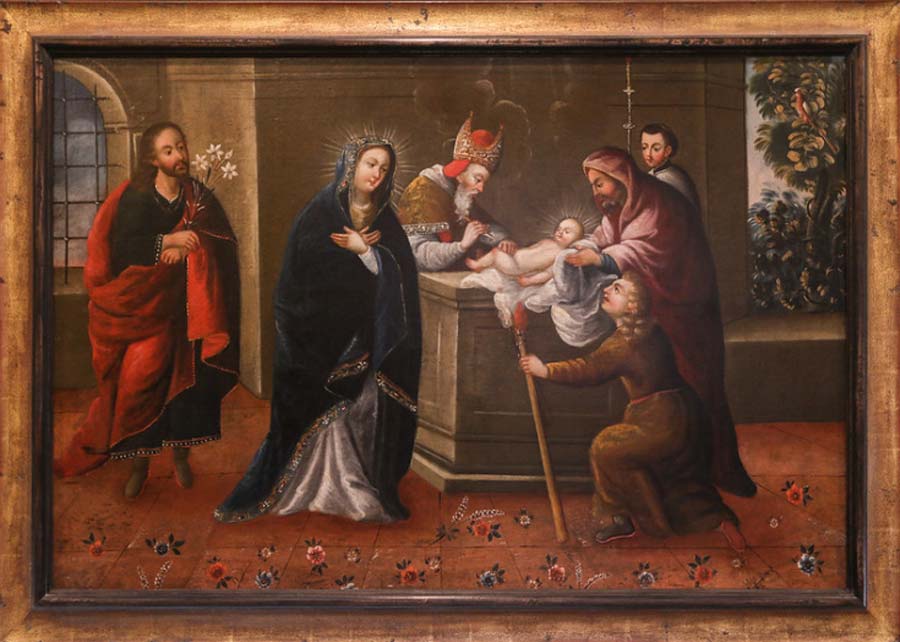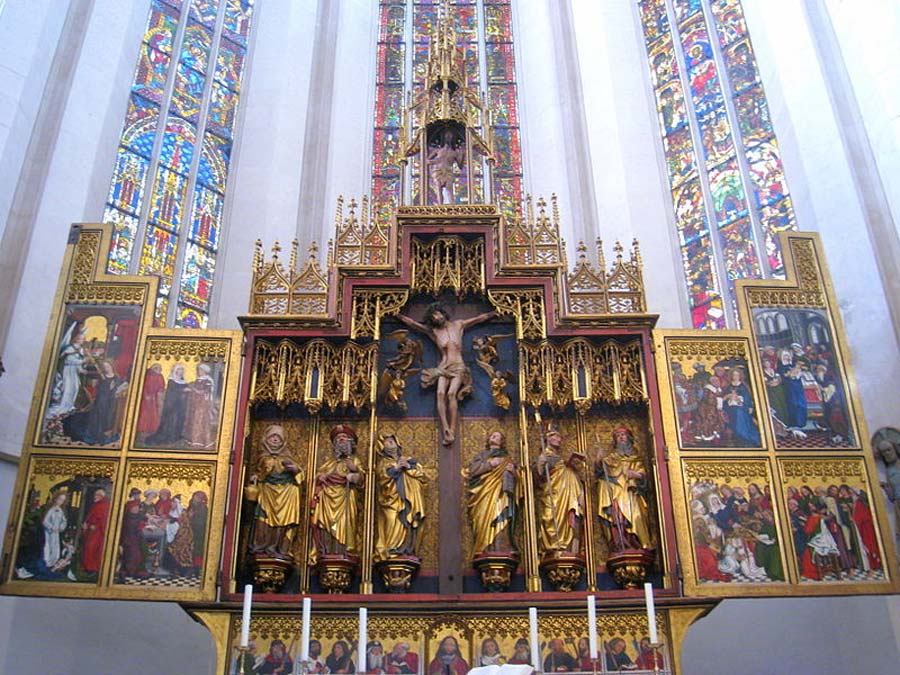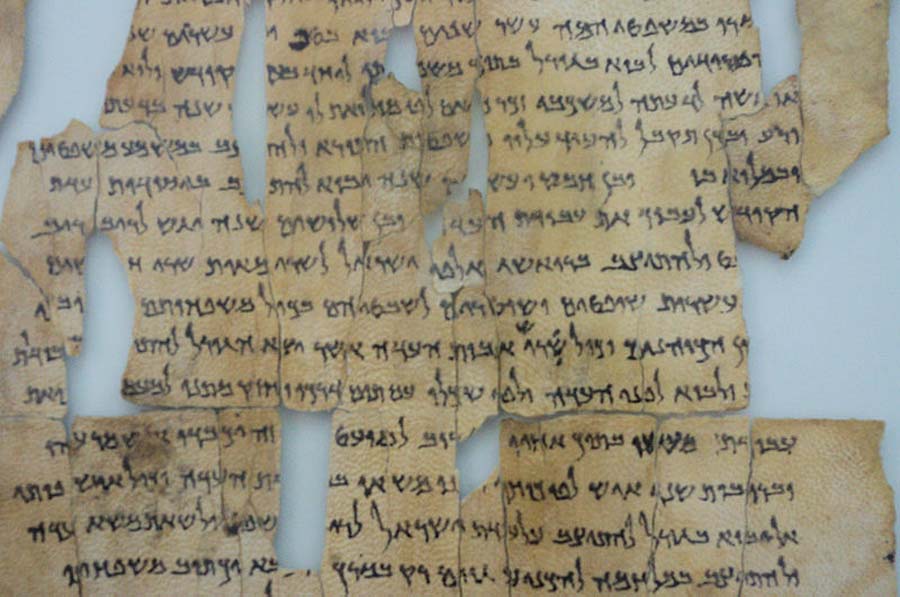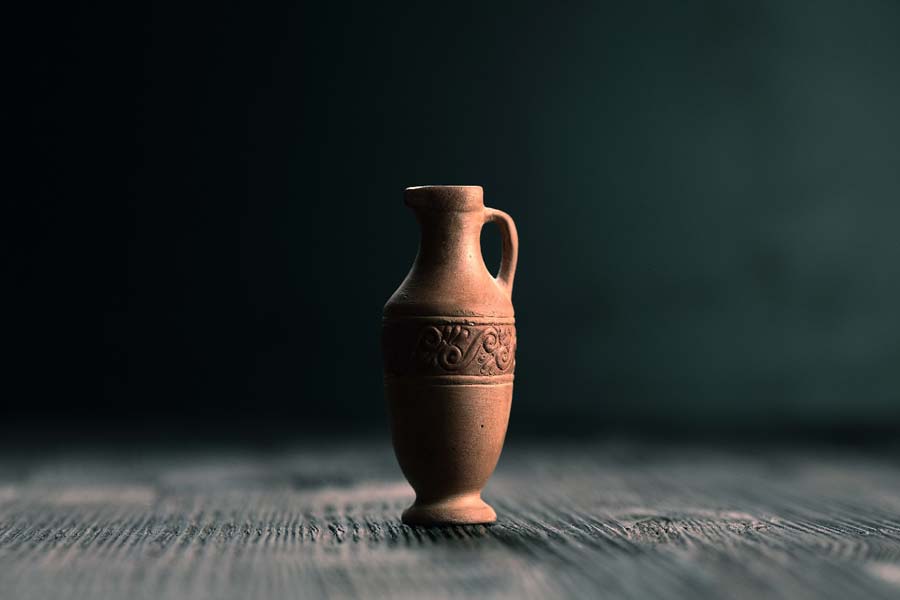The significance of relics in different cultures all over the world is pretty unquestionable. Many people treat religious relics as their only means of interacting with the divine power. Medieval Christianity also has its fair share of relics which played a major part of the religion’s development. This largely involved the rising demand for relics that were associated directly with saints. Such is the power of religion, that the foreskin of Jesus or the Holy Foreskin is one of the most searched after relics. Let’s learn more about the journey of the foreskin of Jesus and whether it actually existed.
Why is Christ’s Foreskin Important?
During medieval times, belief in the supernatural and occult was rampant in Europe. Therefore, relics with any form of close relationship to Jesus Christ himself had prominent attention from people. Now, it is quite important to remember that this was not some ordinary saint; it was Jesus himself. So, any relic which he supposedly touched or used during the course of his life became prized by his religious followers.
So, it was quite reasonable to assume that the foreskin of Jesus was not something to be taken lightly. It was an actual body part of Jesus Christ, and therefore religious followers all over the world would do anything to preserve it in their possession. Furthermore, many people were convinced of its existence due to the specific mentions of it in Bible. The Bible has specifically mentioned that the foreskin of Jesus is the only part that was removed from his body during his lifetime. The particular mention of the removal of his foreskin eight days after birth also strengthens the myth’s foundation.

The circumcision of Jesus Christ is described in the Bible by St. Luke. As Luke 2:21 states, “And at the end of eight days, when he was circumcised, he was called Jesus, the name given by the angel before he was convinced in the womb.” Now, it may seem quite blasphemous to talk about the Holy Foreskin, as it was ordained by the Roman Catholic Church in 1900. However, it has been responsible for many heists and loss of life as it has passed down to the current day. Therefore, the Holy Foreskin definitely has a promising implication in terms of historical studies.
The Importance of Relics
Relics could include any man-made objects such as shoes or cloaks, and even the body parts of saints were the known examples of relics. The hands and, in some cases, the head, like the head of John the Baptist, as well as the tooth, could be popular examples of body parts serving as relics. Churches focused on relics as a prominent way of marketing their presence. The demand for possession of more relics among churches increased profoundly. The more relics a church had, the more popular it was and had the capability for drawing in worshippers. Certain churches and monasteries would publicize different relics in their collection for popularity.

However, the relics were not so ‘holy’ when it came to people who dealt with them. The trading of these holy goods, supposedly instruments for establishing a connection with the divine power and communicating with God, in reality led to many heinous activities. The theft of relics and fraud in the name of religion and God became more and more commonplace. Ultimately, the relics in medieval Europe did not live long and traveled to Western Europe with the sacking of Constantinople in the Fourth Crusade.
The different relics which were transported to Western Europe after the conquest of Constantinople were related directly to Jesus Christ. For example, the mother’s milk of Mary or the True Cross on which Jesus had died were some of the known relics that marked a significant milestone in history. On the other hand, there is a lot of doubt about the bodily remains of Jesus Christ on this planet. Common religious beliefs indicate that Jesus ascended to heaven with his body, and therefore, he didn’t leave anything behind. So, the debate around the importance of the Holy Foreskin as a holy relic definitely has a profound implication in history.
The Circumcision of Jesus and History
The circumcision of Jesus has been a focal subject for religious art in the late medieval as well as early modern periods. Some of the notable examples of the depiction of Christ’s circumcision in the art include: “Circumcision of Christ” from the “Twelve Apostles” Altar by Friedrich Herlin in 1466; “Circumcision of Christ” by Francesco Bissolo in the early half of the 16th Century; and “The Circumcision of Christ” by Bartolomeo Biscaino in the 17th Century.

On the other hand, the Holy Foreskin was not just a subject for religious art. Interestingly, people did claim to have the actual artifact in physical form. Many people and institutions claimed to have ownership of the Holy Foreskin, which was claimed to indicate its ‘magical’ properties of duplicating. Quite a blow for science there, isn’t it? As an explanation it sounds absurd, especially since there was no single piece of evidence to prove that any of the pieces were an actual body part of Jesus.
The most formidable obstacle in the path of learning about the whereabouts of the Holy Foreskin is the lack of information. Very few authors and researchers have attempted to approach the topic of Christ’s foreskin, especially after the Roman Catholic Church issued a decree in 1900. The decree emphasized excommunicating anyone who spoke or wrote about the foreskin of Jesus. Therefore, it is quite intriguing to see that what was once a highly revered artifact was now deemed taboo by religious institutions.
Robert Palazzo sheds light on the history of the Holy Foreskin by his research published in the article, “The Veneration of the Sacred Foreskin(s) of Baby Jesus: A Documentary Analysis.” The article provides interesting insights on the relic and its significance in shaping up Christian history. He most notably cites “The First Gospel of Baby Jesus”, authored sometime just before the 6th Century. The document clearly focuses on describing the ways in which the foreskin was kept and changes in its ownership across generations.

Earliest Accounts of the Holy Foreskin
The foreskin of Jesus is an ancient artifact mired in mystery, and the myths based on it have had a huge role in building its reputation. The first verified account of the circumcision of Christ comes in the apocryphal “Arabic Infancy Gospel”. The story tells of the circumcision of Jesus on the eighth day after his birth. According to Jewish law, the boy had to be circumcised, and the location for the circumcision was a cave.
Then, an old Hebrew woman reportedly took the foreskin, while some also say that she took away the navel string. The story indicates that she preserved the foreskin in an alabaster box containing old oil of spikenard.
Interestingly, the first account of Jesus’ circumcision also brings in the son of the old Hebrew woman, a druggist. The name of the woman, reportedly Mary, also showcases some sort of connection with the mother of Jesus Christ. She apparently warned her son against selling the alabaster box of spikenard ointment, even for a high amount.

The Holy Foreskin Through History
The earliest reports of the first foreskin relic are associated with the Byzantine Empress Irene. She apparently gifted the relic to King Charlemagne of the Franks. Then, in 800 AD King Charlemagne presented the holy relic to Pope Leo III, and was anointed as the first Holy Roman Emperor. Some accounts suggest that King Charlemagne claimed an angel handed the relic to him.
The holy foreskin was in Rome for many centuries following this event and traveled from place to place. For example, it was sent to the Catherine of Valois in England in 1421 to bring good fortune to her in her marriage with Henry V. Ultimately, the artifact was stolen from its resting place when German protestants sacked Rome in 1527.
The huge ceremony of King Charlemagne presenting the holy foreskin as a gift to Pope Leo III sparked the opportunity for money to be made. Many rival foreskins started to appear in various different parts of Europe. Evidence indicates that almost 31 churches in Europe had claimed to be in ownership of the holy foreskin at some point in the Middle Ages. Some of the notable churches from Paris, Toulouse, Antwerp, Compostela, and Bologna claimed to have the foreskin of Jesus.
These churches all had the same explanation with the story citing that mother Mary was in possession of the foreskin and had given it to Mary Magdalene later along with the navel string or umbilical cord. All the elements in the story of circumcision of Christ clearly indicate that foreskin relics were found almost everywhere.
Well, there is no specific evidence to prove that any of these foreskins belonged to Jesus. Without any clear way of establishing the link between the foreskin relics and Jesus other than stories and myths, the Holy Foreskin has always been shrouded in mystery.
A Reluctant Church
There is no doubt that the Holy Foreskin is quite a significant aspect of Christian culture and religious history. It has played a crucial role in overcoming the barriers of understanding Jesus as an incarnation of God. The religious significance of Christ’s foreskin largely revolves around the fact that it showed the human side of Jesus Christ. The circumcision event also showed that Jesus bled like other human beings.
However, the increasing claims of holy foreskin relics popping up throughout Europe turned the situation into a farce. Many churches started making efforts to obtain valid authentication for their artifact from Church leaders. For example, monks of San Giovanni in Laterano, Rome, in the early 12th Century requested Pope Innocent III to verify the authenticity of their foreskin artifact. However, the Pope refused to do so, thereby indicating the presence of doubt regarding the originality of foreskin relics.

On the other hand, monks from Charroux established a formidable claim regarding the authenticity of their foreskin relic. According to their belief, the foreskin relic in their possession yielded drops of blood during a ceremony. This was probably one of the reasons for which Pope Clement VII serving from 1523 to 1534, declared that the foreskin relic of the monks of Charroux is the real Holy Foreskin.
Within these highs and lows, the idea of the holy foreskin gradually became a subject of criticism and mockery. So, the church started ignoring questions regarding the authenticity of foreskin relics. As a matter of fact, the church stopped talking about the holy foreskin altogether. The Roman Catholic Church subsequently banned talking or writing about the Holy Foreskin in 1900.
Lost to History?
As the church started rejecting any association with holy foreskin relics, it was only a matter of time before it dissolved into history. The last known resting place of the Holy Foreskin was the Italian village, Calcata, 30 miles to the north of Rome. According to locals, the relic has been there in the village since 1527, and priests would take it out and parade it around. The relic remained there until it mysteriously disappeared in 1983 from a shoebox under the priest’s bed. Most probably a theft, this incident was probably the final chapter in the medieval history of Christianity. Some people believe the Vatican was responsible for the disappearance, to dissuade any discussions on the foreskin relics.
It is clear that many historical accounts for the Holy Foreskin complicate the understanding of its origins. Starting from 6th Century gospels to modern research pieces on Christ’s foreskin, there is a wide variety of information related to the same. However, it is quite important to understand the significance of the foreskin relics, which emerged over the years as symbols of the evolution of Christian history. At the same time, the circumcision of Christ also has a prominent significance in establishing the impact of circumcision as a cultural practice. In the end, the search for Christ’s foreskin is just as futile as searching for his head after he ascended to the heavens years ago.
Top Image: Detail from the “Twelve Apostles” Altar by Friedrich Herlin in 1466. Source: Friedrich Herlin / Public Domain.
By Bipin Dimri